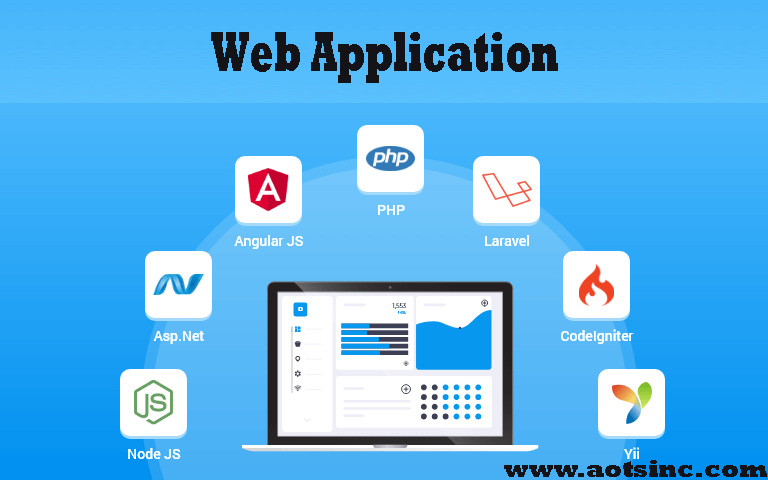A web application (web app) is an application program that is stored on a remote server and delivered over the internet through a browser interface. Websites are web apps by definition and many, although not all, websites contain web apps.
Developer design web application for a wide variety of uses and users, from an organization to an individual for numerous reasons. Commonly used web applications can include webmail, online calculators or e-commence shops. While users can only access some web apps by a specific browser, most are available no matter the browser.
Here are some key features and components of web applications:
1. Client-Server Architecture:
Web applications follow a client-server architecture. The client is the user’s device (browser), and the server is where the application and data reside.
2. Frontend:
The frontend is the user interface that users interact with. It’s typically built using HTML, CSS, and JavaScript. Modern web applications often use frontend frameworks like React, Angular, or Vue.js to create dynamic and responsive user interfaces.
3. Backend:
The backend is responsible for server-side logic, database interaction, and overall application functionality. It’s often built using server-side programming languages like Python, Ruby, Java, or Node.js. Frameworks like Django, Flask, Ruby on Rails, and Express.js are commonly used.
4. Databases:
Web applications store and retrieve data from databases. Common types of databases used in web development include MySQL, PostgreSQL, MongoDB, and SQLite.
5. Communication:
Communication between the frontend and backend is often facilitated through APIs (Application Programming Interfaces). APIs define how different software components should interact.
6. Security:
Web applications need to implement security measures to protect user data and prevent unauthorized access. This includes measures such as HTTPS, data encryption, and user authentication.
7. Hosting:
Web applications are hosted on servers. There are various hosting options, including traditional web hosts, cloud platforms (like AWS, Azure, or Google Cloud), and serverless architectures.
8. Scalability:
Web applications need to be designed with scalability in mind, especially if they expect a large number of users. This involves considerations like load balancing and efficient use of server resources.
9. Testing:
Web applications undergo various testing phases, including unit testing, integration testing, and end-to-end testing, to ensure functionality and performance.
10. Frameworks and Libraries:
Developers often use frameworks and libraries to streamline development. For example, frontend frameworks mentioned earlier and backend frameworks like Django, Flask, or Express.js.
11. Responsive Design:
Modern web applications are designed to be responsive, meaning they provide a good user experience across different devices and screen sizes.
Web applications have become integral to various aspects of modern life, from social media platforms and e-commerce websites to productivity tools and online collaboration platforms. They offer the advantage of accessibility from any device with a web browser and an internet connection.[https://aotsinc.com/blog/]
Benefits
Web applications have many benefits. Some common benefits include the following:
- Multiple users can access the same version of an application.
- Users don’t need to install the app.
- Users can access the app through various platforms such as a desktop, laptop or mobile.
- Users can access the app through multiple browsers.
